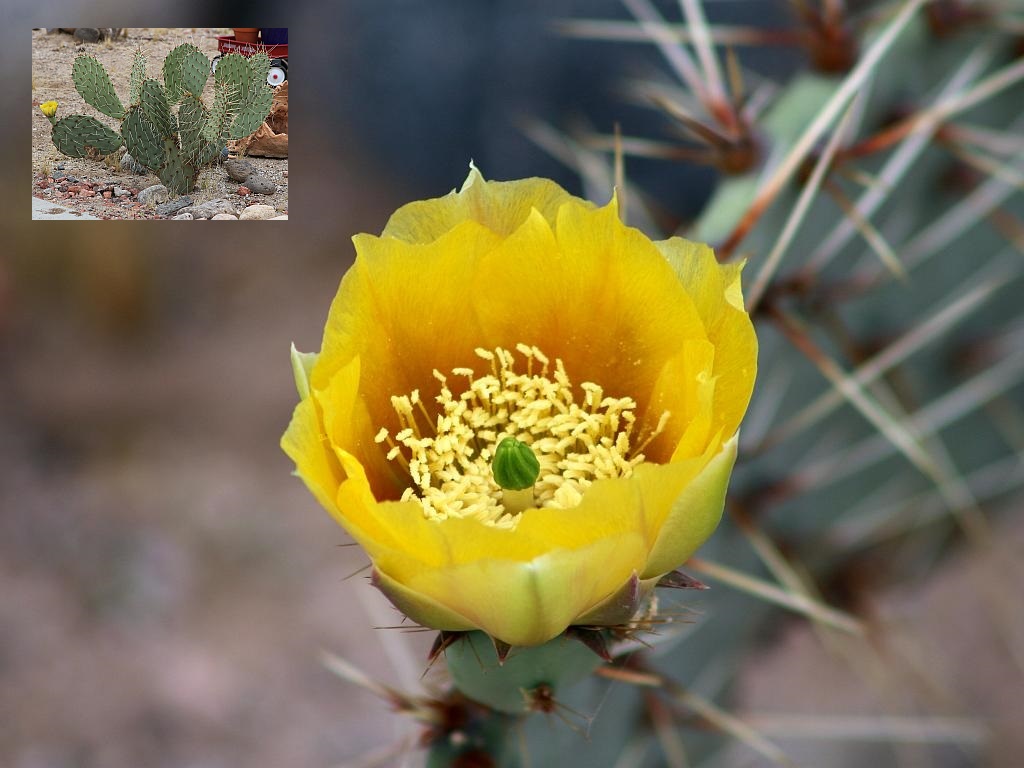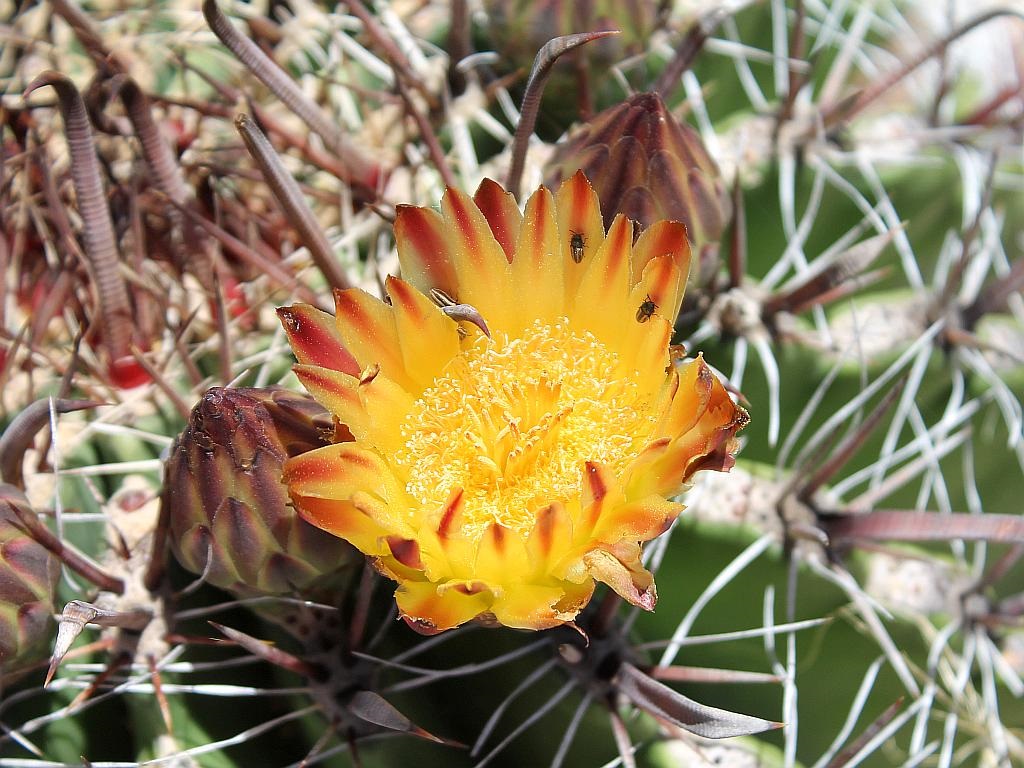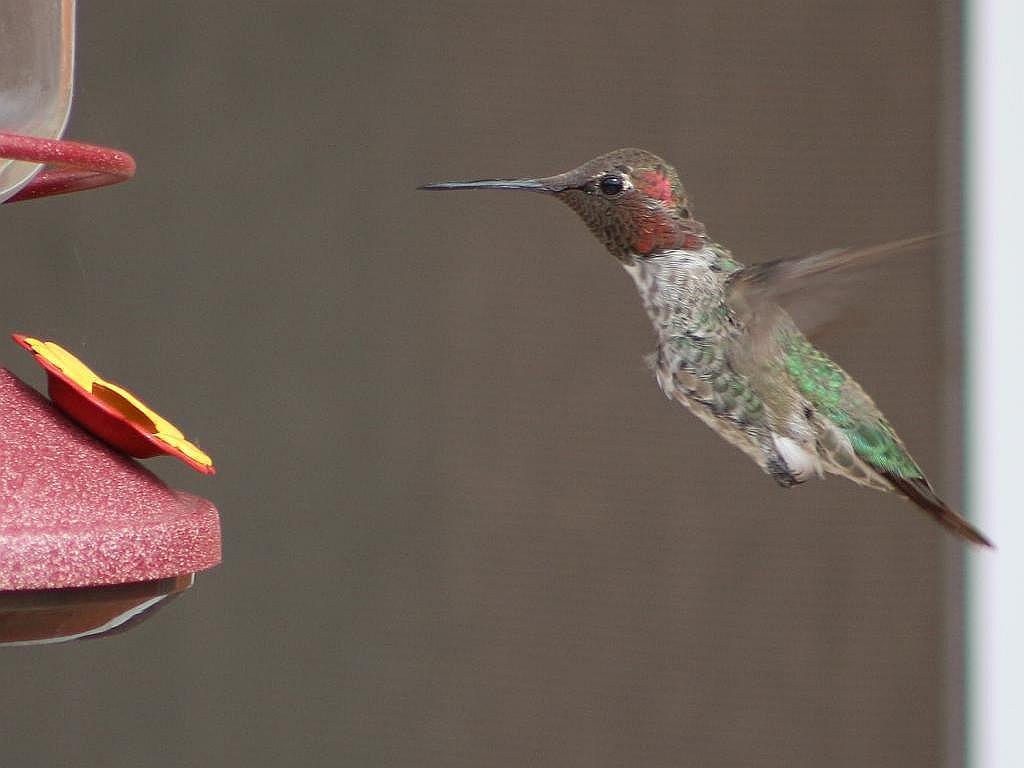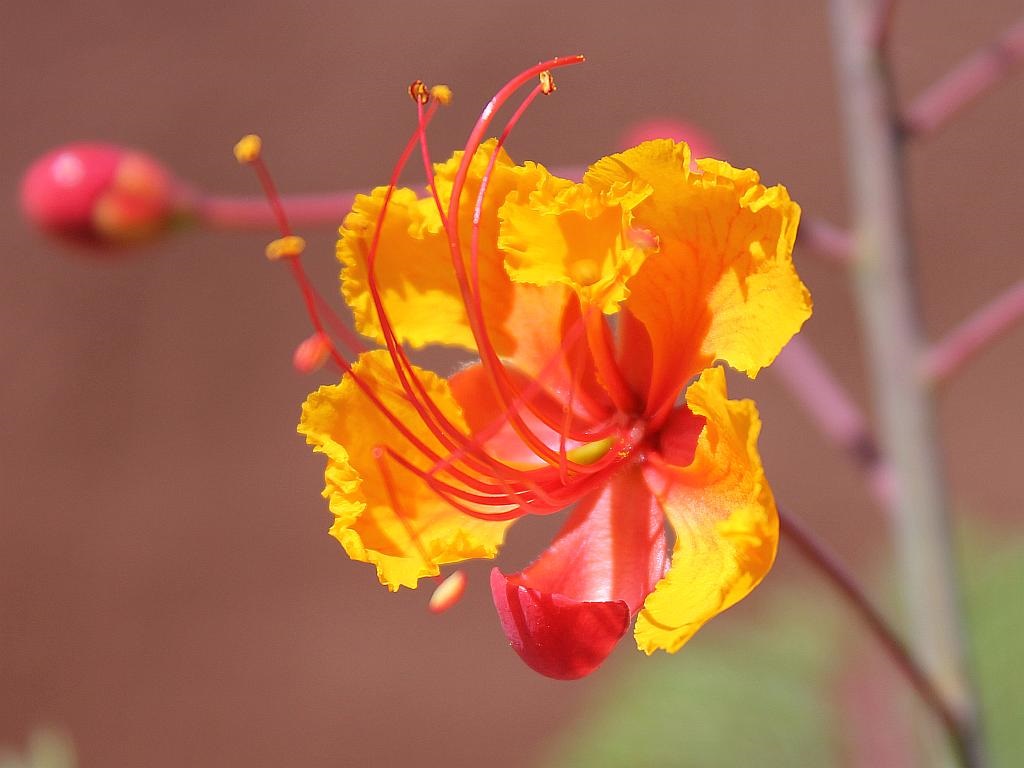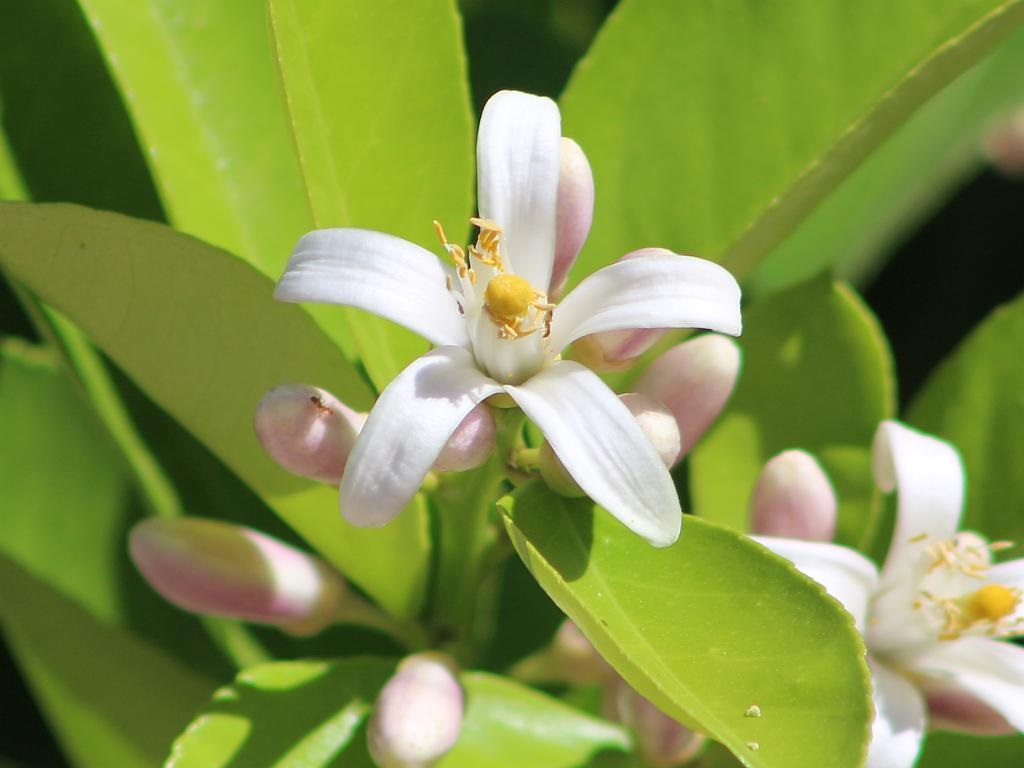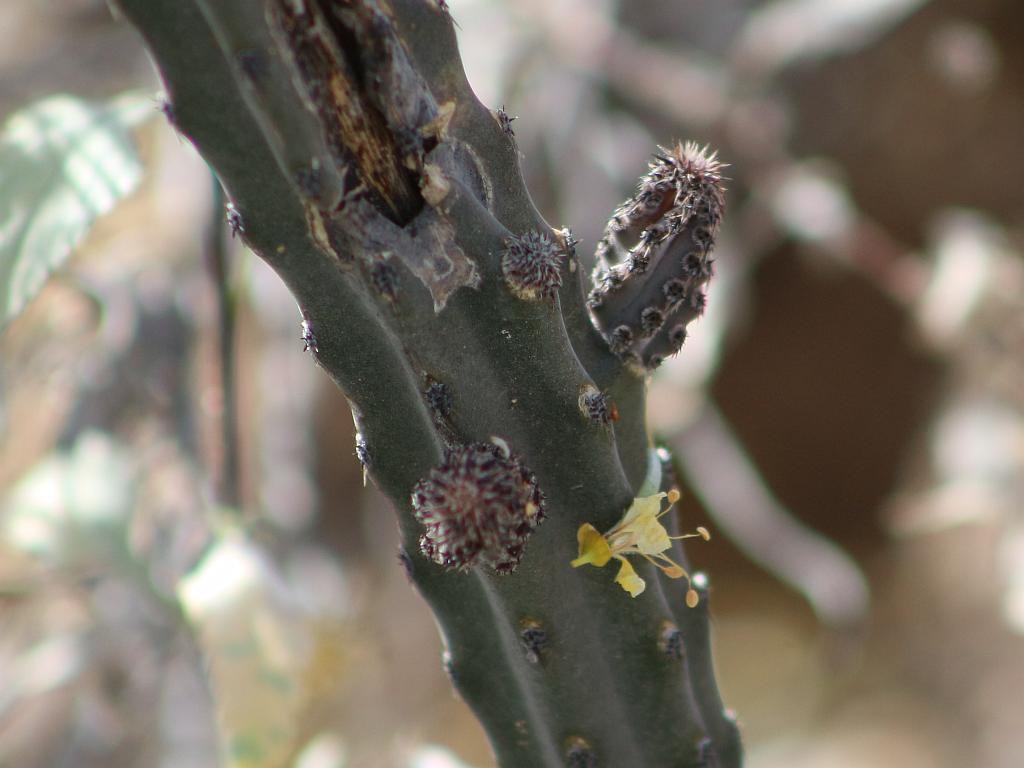I show a lot of desert flowers here because they are so beautiful. This one is no exception to that, but it has a little story behind it.
A couple of winters ago, I removed a paddle from a prickly pear cactus growing on the hill east of our house and put it into a pot in the courtyard. Like a good little succulent, it took root and sprouted more paddles. When it got fairly large, we transplanted it to the side of the RV drive west of the house, where it still grows.
This summer, the cactus had this single flower bud. In the image above, you can see the little cactus in the inset where it sits next to the RV driveway. Click on the image to enlarge.
I planted another paddle in a pot in the courtyard last year and it is now also just about ready for transplanting. We’ll get to that one and several others when time and cooler weather permit in the coming days.

